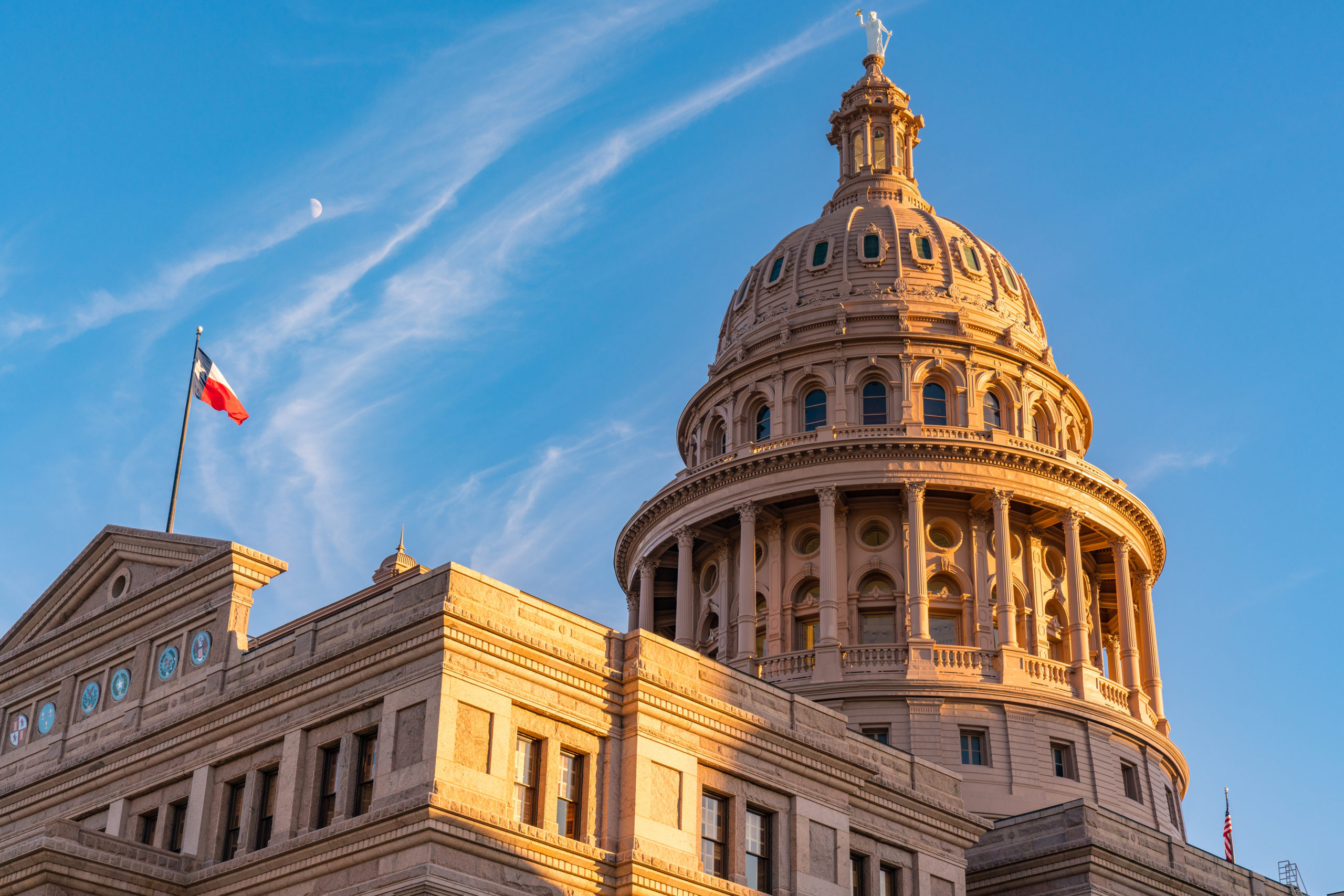Key data on the state of children in Texas, including the impact of trauma and abuse, child fatalities, numbers on the foster care system, paths to prevention, home visiting outcomes, and more.


Key data on the state of children in Texas, including the impact of trauma and abuse, child fatalities, numbers on the foster care system, paths to prevention, home visiting outcomes, and more.

Prevalence of ACEs in Texas and the economic cost to the state if ACEs are not mitigated or prevented.

Statewide strategies to effectively and efficiently prevent adverse childhood experiences (ACEs).

The National Survey of Children’s Health most comprehensive data available on the prevalence of ACEs in Texas.

Key data on the state of children in Texas, including the impact of trauma and abuse, child fatalities, numbers on the foster care system, paths to prevention, home visiting outcomes, and more.

Smart solutions to child abuse and neglect were put forward by TexProtects during the legislative session, including accomplishments, missed opportunities.

Maternal and Child Health Inequities Emerge Even Before Birth (Child Trends)
Highlighting findings from the State of Babies Yearbook: 2020, this brief focuses on the evident disparities in maternal health and birth outcomes among babies and families of color: “To have a healthy pregnancy and positive birth outcomes, women and their infants require access to appropriate health care services, before, during, and after birth.”

TexProtects’ Takeaway: Black and Indigenous babies have a much higher risk of birth complications, low birthweight, and death within their first year of life in comparison to white babies. To achieve the strongest possible outcomes for all, we must meaningfully address health disparities in our communities, beginning with the earliest days of each child’s life.
Tracking COVID-19’s Effects by Race and Ethnicity (Urban Institute)
To work toward an equitable recovery for all U.S. citizens, policymakers and practitioners should pursue solutions that acknowledge and account for COVID-19’s disparate impact on communities of color. “To design these race-conscious policies, policymakers need data to gauge how the pandemic may be affecting people’s health, housing, and livelihoods. This tool uses the near-real-time Household Pulse Survey data to track a set of measures for US households as the pandemic and recovery unfold.”

TexProtects’ Takeaway: The onset of this health crisis has further exposed how systemic racism is creating harmful disparities between white communities and communities of color. The Texas Health and Human Services Commission (HHSC) is taking the first step and has recently announced that it is seeking to remedy the lack of information about how Black and Latinx/Hispanic communities are affected by the virus. All labs that test for COVID-19 are now required to collect information on race, ethnicity, and other factors.
Start with Equity: From the Early Years to the Early Grades (Bipartisan Policy Center & The Children’s Equity Project at Arizona State University)
“Millions of young children are disproportionately underserved, over-punished, and barred from high-quality education in American schools…. The Children’s Equity Project and the Bipartisan Policy Center have come together to create an actionable policy roadmap for states and the federal government—as well as for candidates at all levels of government vying for office—to take meaningful steps to remedy these inequities in early learning and education systems.”

TexProtects’ Takeaway: More than half of the children in the United States are children of color. COVID-19 is exacerbating the inequitable distribution of opportunity in our education system. This policy agenda supports fully funding programs like Head Start, requiring states to report plans on who they will work to make learning systems more equitable, supporting and funding equitable educator training, and ensuring all education legislation prioritizes racial, ethnic, linguistic, socioeconomic, and ability-based integration.
Health Care Access for Infants and Toddlers in Rural Areas (Child Trends)
“While many public reports provide indicator data on rural health care access at the national level, this brief uses data from the State of Babies Yearbook: 2020 to examine state-level differences in how infants and toddlers living in rural areas are faring. Equipped with these data, state policymakers can explore strategies to support the needs of very young children and their families.”

TexProtects’ Takeaway: Only 0.5% of infants and toddlers in Texas who could benefit from evidence-based home visiting (HV) programs are receiving those services. This upcoming legislative session, policymakers in Texas must identify why there are gaps in how existing HV programs serve rural children and families.
As schools reopen, addressing COVID-19-related trauma and mental health issues will take more than mental health services (Child Trends)
To address COVID-19 related trauma and mental health concerns amongst students, Child Trends recommends that decision-makers in education take a comprehensive approach that extends beyond offering school-based mental health services. Such an approach includes (but is not limited to) educating all school staff about trauma and mental health; acknowledging that not every community has experienced the pandemic in the same way; and ensuring that school staff know how to connect students to community-based mental health resources.

TexProtects’ Takeaway: Through the passage of HB 18, the Texas Legislature took a step last session to ensure that all school staff are adequately trained to understand the impact of trauma on students, implement strategies to minimize the negative impacts, and maximize academic opportunities in an environment of safety and connection, making referrals when needed and with parental consent. Policymakers and organizations like TexProtects must hold school districts accountable and ensure that these mandatory trainings are taking place in a timely fashion.
To support infant development, states can encourage parents to read, sing, and tell stories with their children (Child Trends)
“Here’s an easy, evidence-based, and low-cost investment for early childhood leaders and policymakers to promote young children’s development, empower parents, and strengthen families: Encourage parents and other caregivers to read, sing, and tell stories to their children. It’s that simple.”

TexProtects’ Takeaway: Building the caregiver-child bond through singing, reading, and telling stories contributes to strengthening resiliency and encouraging literacy skills and cognitive and socioemotional intelligence in young children.
Different brain profiles in children with prenatal alcohol exposure with or without early adverse exposures (Andre, Q., McMorris, C., Kar, P., Ritter, C., Gibbard, B. Tortorelli, C., & Lebel, C.)
“Prenatal alcohol exposure (PAE) has been linked with widespread brain abnormalities including reduced brain volume, altered cortical thickness, and altered white matter connectivity. Fetal alcohol spectrum disorder (FASD), the neurodevelopmental disorder associated with PAE, is the most common cause of preventable developmental disabilities in children… The goal of this study was to determine how PAE in the presence or absence of postnatal adverse exposures is associated with brain structure and mental health symptoms in children.”

TexProtects’ Takeaway: This research contributes to a long line of research on adverse childhood experiences (ACEs) and how they shape the physical and mental brain health of children. TexProtects is working with policymakers on legislation that would create a framework in Texas on how to mitigate and treat ACEs on a statewide level to ensure the health of every child.
Father-child play: A systematic review of its frequency, characteristics and potential impact on children’s development (Amodia-Bidakowska, A., Laverty, C., & Ramchandani, P.)
This paper reflects a systematic literature review of publications in psychological and educational databases (until the year 2018) to “characterize the nature and potential impact of father-child play” for children ages 0-3. Given their findings, the authors suggest that father-child play can substantially benefit children’s development, which “provides a clear imperative for policy makers and practitioners to facilitate and support fathers, as well as mothers, in developing more positive and playful interactions with their infants.”

TexProtects’ Takeaway: Fathers matter! Encouraging strong father-child relationships is part of building protective factors for resiliency in children. This report enforces that early father-infant play is linked to positive social, emotional, and cognitive outcomes.
African American, American Indian, and Alaska Native children are all more likely to live in grandfamilies – “families in which grandparents, other adult family members or close family friends are raising children with no parents in the home” – than other racial or ethnic groups. The following two reports by Generations United are intended to support child welfare or other government agencies, as well as nonprofits, to better serve the grandfamilies with which they work:

TexProtects’ Takeaway: Children of color are dramatically overrepresented in kinship care both within and without the formal foster care system. Historically, there has been a severe lack of support and services for these families – especially those that are culturally appropriate.
Road to Resilience: Raising Healthy Kids (Mayo Clinic Health System)
“This six-week virtual program will help you and the youth in your life combat the effects of Adverse Childhood Experiences (ACEs). There are a variety of resources in linked pages on this site that you and your youth should review at your own pace. You can read content, watch videos or do activities.”

TexProtects’ Takeaway: Adverse childhood experiences (ACEs) can lead to negative mental and physical health effects later in life. This tool is a great way to help build resiliency against these potential negative outcomes so that ACES do not dictate a child’s future.
Using Media Effectively with Young Children and Virtual Visitation (Youth Law Center & Quality Parenting Initiative)
“While in-person visitation is the best way to support families, it isn’t always possible during this emergency. Now more than ever, it is critically important that birth and foster parents partner together to ensure that children experience continuity of relationships and can maintain contact with the people they love.” This brief shares research and practical suggestions from Dr. Rachel Barr, an expert in media and young children, to help parents navigate and make the best of virtual visitation with their young children.

TexProtects’ Takeaway: Virtual visitation can be used to maintain and strengthen relationships for young children. Learn how to navigate difficulty holding a child’s attention, problems with eye contact and sharing attention, loss of physical contact, technical problems, and toddler independence.

Children that experience chronic adversity and trauma can affect their neurological and hormonal development.

DID YOU KNOW?
Welcome to the fourth and final part of our look at how child protection legislation fared in the 86th Texas Legislature. We began this series in May with our top-priority bills, followed by an examination of prevention and early intervention legislation and child protection systems.
Today’s post looks at bills affecting behavioral health and trauma. For a PDF version of this post, click here.
Challenges with mental health can be both a cause and a consequence of early childhood adversity. Therefore, both prevention and healing require adequate systems of care to ensure children and their parents have access to mental health care and services that incorporate trauma-informed approaches that can be both healing and protective.
In the 86th Legislative Session and in the wake of the shooting at Santa Fe High School and Hurricane Harvey, the momentum around school safety and trauma offered an opportunity to take a meaningful look at the capacity issues in our communities and the ways in which our schools might better facilitate access to care and incorporate strategies that allow children with a trauma history to engage productively and thrive.
Schools are often the first point of contact for students with behavioral health issues, and undiagnosed mental health conditions can negatively impact the academic performance, behavior, and school attendance of students.
Like all diseases, care works best with early intervention when symptoms are less severe and there is less need for more intense treatments, specialists, and medications. However, most schools lack adequate training or staff to address student needs, and most communities in Texas have a shortage of mental health and substance use providers to which families and children might be referred for treatment.
Stress and trauma, both acute (e.g. Hurricane Harvey) and chronic (e.g. abuse/neglect), can place children in “fight or flight” mode. This course overwhelms the brain, including its stress hormone cortisol, and impairs a child’s ability to self-regulate and engage in higher-order thinking. These adverse childhood experiences can disrupt normal development and lead to a higher risk of both mental challenges (e.g. depression and suicidality) and physical challenges (e.g. heart disease and stroke) throughout the lifespan. However, the negative impacts can be mitigated if students are equipped with protective factors through healthy relationships, safe environments and access to care, when needed.
Behavioral health care investments and programs are spread across state agencies including:
In addition to state entities, behavioral health services are provided at the local level in jails, hospital emergency departments, schools, local mental health authorities, various nonprofit agencies, public health clinics and other settings, with people frequently moving between service systems.
The goal of behavioral health policies is recovery. Recovery is an ongoing process that enables individuals to mitigate the negative effects of their challenges and trauma and become empowered to make beneficial choices, engage in healthy relationships and create a successful life.
HB 1 funding for behavioral health includes programs or services directly or indirectly related to the research, prevention, or detection of mental disorders and disabilities, and all services necessary to treat, care for, supervise, and rehabilitate persons who have a mental disorder or disability, including persons whose mental disorders or disabilities result from alcoholism or drug addiction. Funding for behavioral healthcare to support programs at 23 state agencies and associated costs within Medicaid and the Children’s Health Insurance Program total $7.8 billion for 2020-2021. Some of these services include:
Some notable increases in investment are found in the table below:
| Behavioral Health | 2020-21 Base Budget | Additional Investment and House Bill 1 FINAL | % Difference |
|---|---|---|---|
| Department of Family and Protective Services for Purchased Client Services | $52.8 million | $24.4 million; $77.3 million total | 46.2% + |
| Health and Human Services Commission | $3 billion | $303.7 million; $3.3 billion total | 10.3% + |
| University of Texas Health Science Center at Tyler | $8 million | $5.5 million; $13.5 million total | 68.3% + |
| * Higher Education Coordinating Board | $0 | $100 million total | 100% + |
| Department of Criminal Justice | $515.8 million | $9.8 million; $525.6 million total | 1.9% + |
| Juvenile Justice Department | $175.5 million | $3.6 million; $179.1 million | 2.0% + |
*Funds available to the newly created Texas Mental Health Consortium to be distributed to health-related institutions of higher education for expanding the mental health workforce and for psychiatric fellowships. The Consortium is created through SB 11.
Safe and Healthy Schools Initiatives
Funding for school safety programs includes an additional $343.5 million to expand children’s community mental health, grants to mental health professionals at local mental health authorities provided by HB 19, school safety infrastructure enhancements, a new school safety allotment provided by SB 11; school district reimbursement of post-disaster expenditures, and customized school safety programming and other services.
HB 18 will increase awareness of mental health among public school students and educators, reduce the stigma of mental health issues, and provide more resources on mental health and substance abuse for educators. Through integration in district policy, staff training and continuing education requirements, HB 18 ensures that school staff are adequately trained to understand the impact of trauma on students, implement strategies to minimize the negative impacts, and maximize academic opportunities in an environment of safety and connection, making referrals when needed and with parental consent.
HB 19 requires local mental health authorities to employ a nonphysician mental health professional to serve as a mental health and substance use resource for school districts. These professionals will act as a resource for school district personnel by
helping increase awareness of mental health and co-occurring mental health and substance use disorders, assisting with the implementation of mental health or substance use initiatives under state law or agency rules, and ensuring awareness of certain recommended programs and practices and treatment programs available in the district. The bill will also require the professionals to help personnel facilitate on a monthly basis training regarding mental health first aid, the effects of grief and trauma, and prevention and intervention programs that will help students cope with pressure to use illicit substances.
HB 811 requires that school districts take into consideration whether a child is in the conservatorship of the state or is homeless when making decisions concerning disciplinary actions including suspension, removal to a disciplinary alternative education program, expulsion or placement in a juvenile justice alternative education program, regardless of whether the decision concerned a mandatory or discretionary action.
HB 906 establishes the Collaborative Task Force on Public School Mental Health Services to study and evaluate state-funded mental health services provided at school districts or open-enrollment charter schools. The task force will also evaluate mental health services training provided to educators and the impact of the provided mental health services. The task force will share its findings and recommendations with the governor, lieutenant governor, House speaker, and the TEA by Nov. 1 in each even numbered year until 2025.
SB 11 is the 86th Legislature’s answer to increasing school safety. It includes many provisions related to safety, security, and emergency preparedness and response. In addition, the bill requires a trauma-informed care policy to address methods for increasing staff and parent awareness of trauma-informed care and the implementation of trauma-informed practices and care by district and campus staff. The policy will also address available counseling options for students affected by trauma and grief. In addition, SB 11, amended with language from Sen. Nelson’s SB 10, creates the Texas Child Mental Health Care Consortium to leverage the expertise and capacity of the health-related institutions of higher education in order to address urgent mental health challenges and improve the mental health care system in this state in relation to children and adolescents.
SB 712 provides guidance by naming extreme aversive interventions that may not be used on any student, under any circumstances. By clarifying what behavior modification techniques are prohibited and providing direction on positive alternatives. SB 712 will improve the safety and wellbeing of students, especially those with special needs. The companion to this bill is HB 3630.
HB 2813 ensures the continued existence of the Texas Statewide Behavioral Health Council by codifying it in statute. The council is charged with developing and monitoring the implementation of a five-year statewide behavioral health strategic plan and developing a biennial coordinated statewide behavioral health expenditure proposal. This work helps state agencies coordinate and reduces duplication of services, improves the quality and accessibility of services, and saves taxpayer dollars.
SB 429 requires the Statewide Behavioral Health Coordinating Council, under the direction of the Health and Human Services Commission (HHSC), to develop a comprehensive plan to increase and improve the workforce in Texas to serve individuals with mental health and substance use issues. By Sept 1, 2020, HHSC will need to start implementing the plan.
SB 633 requires HHSC to form local mental health authority (LMHA) groups in rural areas and develop a mental health services development plan for each group. Public mental health services are primarily provided through HHSC contracts with LMHAs. These entities provide or arrange crisis, community mental health, and substance use services; jail assessments; and services for individuals with intellectual and developmental disabilities. This bill increases service access, especially in rural counties, by requiring regional coordination and planning to reduce government costs and negative impacts to individuals in crisis.
SB 821 amends a children’s advocacy center’s duties and a multidisciplinary team’s membership and response. These centers assess victims of child abuse and their families to determine their need for services related to the investigation of child abuse and provide those services. This bill updates the Family Code to more clearly align statute with current practices, standards, services, and operations of children’s advocacy centers, increase accountability, and strengthen access to services.
SB 1177 permits a Medicaid Managed Care Organization to offer medically appropriate, cost-effective, and evidence-based services from a list approved by the state Medicaid managed care advisory committee and included in the contract in lieu of mental health or substance use disorder services specified in the state Medicaid plan. This will provide flexibility to providers and access to evidence-based and cost-effective services without additional cost to the state.
SB1564 aligns Texas Medicaid policy with federal law by using the federal definition of a “qualifying practitioner.” This will allow more practitioners to prescribe and be reimbursed for buprenorphine, a common medication-assisted treatment for substance use disorders. Currently, a large number of Texans who have a substance use disorder do not have access to providers who are able to prescribe them the common opioid antagonist buprenorphine.

Through HB 10, this research institute would have been able to lead the charge on child and adolescent mental health by funding research, increasing awareness of best practices, and fostering statewide collaborations. This institute would coordinate with the Mental Health Care Consortium to accelerate community access to information, treatments, and training related to behavioral health and substance use. The related HJR 5 would have created a revenue source for this research and increased access to care.